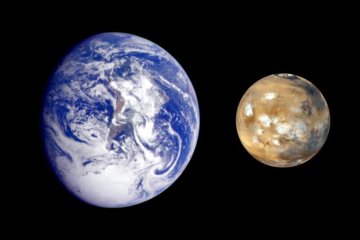All genres
41.
Conference Paper
Afternoon radar aurora and polar cap convectin pattern. In: Proc. Conf. Achievements of the IMS, p. 1291. ESA Publ. Div., Noordwijk (1984)
42.
Conference Paper
High Latitude Upper Atmospheric Physics (Ionospheric Aspects). In: Symposium of present and future scientific programmes of the Max-Planck-Institut für Aeronomie. ANY PUBLISHER, Lindau/Harz (1973)
43.
Report
Millimeter Wave atmospheric Sounder (MAS) Follow-on. Max-Planck-Institut für Aeronomie, Katlenburg-Lindau, Germany (1997)
44.
Report
The chirp transform spectrometer. Max-Planck-Institut für Aeronomie, Katlenburg-Lindau, Germany (1989)
45.
Report
The use of Chirp-transform-spectrometers for real time Fouriertransform of stochastic signals. Max-Planck-Institut für Aeronomie, Katlenburg-Lindau, Germany (1989)
46.
Report
Bestimmung des Wasserdampf- und Ozongehaltes der Stratosphäre und Mesosphäre aus radiometrischen Messungen. Max-Planck-Institut für Aeronomie, Katlenburg-Lindau, Germany (1989)
47.
Report
Heterodyne-Spectroscopy in the Millimeter and Submillimeter Domain. Max-Planck-Institut für Aeronomie, Katlenburg-Lindau, Germany (1987)
48.
Report
Microwave atmosphere sounder for earth limb observations from space. Project and program description. Dornier-IAP, Univ. of Bern - MPAE Lindau (1981)











